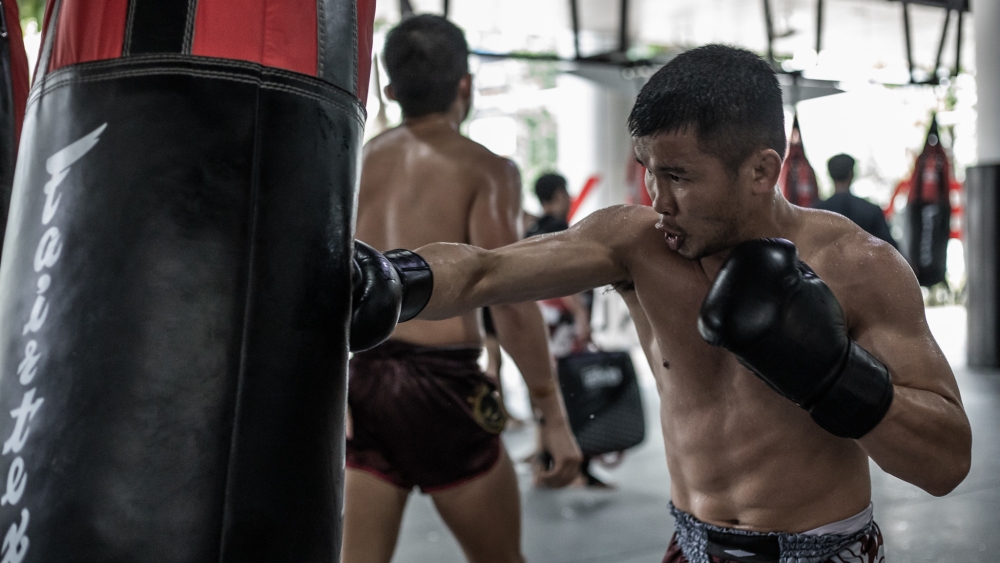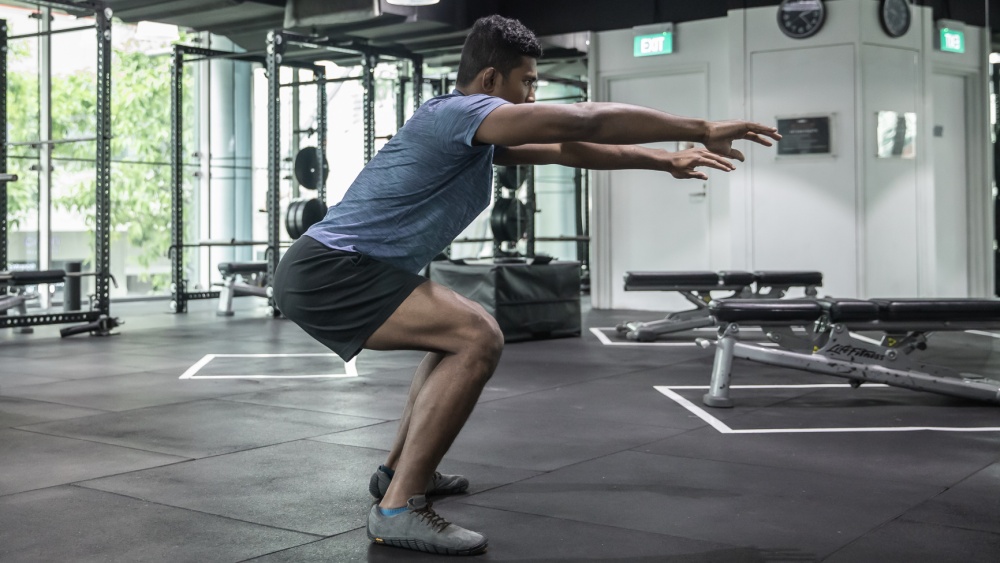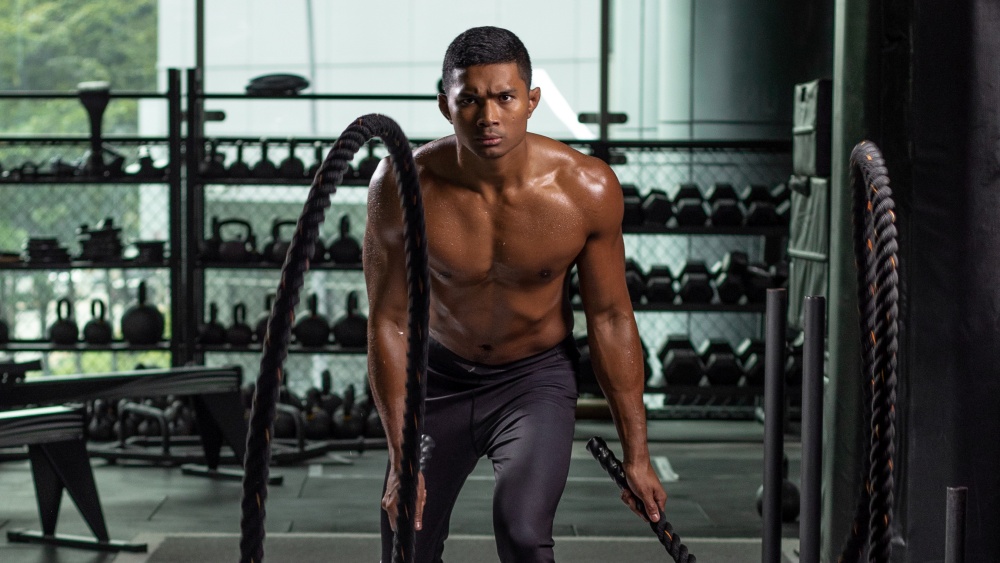Guest post by Evolve MMA, Asia’s premier championship brand for martial arts. It has the most number of World Champions on the planet. Named as the #1 ranked martial arts organization in Asia by CNN, Yahoo! Sports, FOX Sports, Evolve MMA is the top rated BJJ gym in Singapore.
You should seriously consider adding plyometrics to your fitness routine if you’re serious about taking your martial arts game to the next level. Plyometrics is a form of exercise that includes explosive movements. These exercises effectively build explosive power that carries over into many movements used in martial arts.
For example, having explosive hips makes it easier for you to bridge and escape bottom positions when grappling. Explosive hips also help with sprawling and pinning opponents down when you’re on top.
Martial arts rely on explosive fast movements like punching, throwing, kicking, pushing, and hopping. Plyometric training helps to build the explosive strength needed to maximize these movements, using natural dynamic movements.
How Plyometric Exercises Benefit Martial Artists
Let us take a closer look at how some of the benefits of plyometric training makes you a better martial artist:
1) Builds Muscle
Plyometric exercises activate your fast-twitch fibers, leading to stronger, more explosive muscles. Weight lifting exercises do not engage these fibers as much. Training plyometrics regularly can increase your muscle mass significantly.
Stronger muscles translate to improved techniques on the mat. For example, building up your shoulder and arm muscles with plyometrics increases your punching power. You’ve probably seen some of your favorite martial artists performing exercises like battling ropes in fight promos.
2) Burns Fat
Most plyometric exercises can be incorporated into your cardio workouts. They burn more calories than conventional bodyweight exercises or lifting weights. For example, you would burn about 1000 calories if you spent an hour performing box jumps.
Burning excess fat makes your body more efficient, improving your endurance on the mat. The fat burn will also come in handy when it’s time to make weight for your next competition.
3) Balance
Our muscles aren’t always symmetrical since we sometimes use some muscles more than others. For example, right-handed fighters tend to use their right hand more than others, which can lead to it becoming stronger and larger than their left arm.
Plyometric exercises help to even out these imbalances. You can use exercises such as depth jumps to address imbalances in your lower body and exercises like battling ropes to target imbalances in your upper body.
Having better balance makes it easier to stuff takedowns, and you’re less likely to lose your balance and fall when executing striking techniques. You’ve probably watched MMA fights where one fighter caught the other’s leg and was still unable to complete the takedown.
4) Explosive Strength
Plyometrics are viewed as one of the most effective ways to increase your explosive power and strength. For example, many fighters increase their punching power after adding battling ropes to their workout routine.
Explosive strength is one of the most significant advantages a martial artist can have. It helps you to escape disadvantageous positions while making your offensive techniques more powerful.
5) Low Impact
Plyometrics have a low impact on joints like your knees. Even plyometric exercises like kettlebell swings and hurdle joints are low-impact. It helps build stronger, more explosive muscles while being gentle on all your joints.
6) Improves Coordination
Plyometric exercises involve using multiple muscle groups to perform natural movements. For example, box jumps mainly target your lower body, but you still need to engage your upper body by swinging your arms to get maximum lift.
Martial arts techniques also involve using multiple muscle groups simultaneously to perform a specific motion. For example, throwing a roundhouse kick requires you to swing your leg, twist your hips and torso, and swing your lead arm downwards.
Adding plyometrics to your workouts improves your coordination, which carries over to your performance in the dojo.
7) Massive Variation
Plyometric exercises come with countless variations, so you’re less likely to get bored with your workouts. Having lots of variation also means you get to target each muscle group from various angles, leading to increased strength and size gains.
Simple Plyometric Exercises
Now that we’ve gone over how plyometrics can make you a more formidable martial artist, let’s take a look at some simple exercises you can incorporate into your fitness routine:
1) Jump Squats
Jump squats mainly target muscles in your lower body. It’s a simple exercise to master. Here’s what it looks like:
- Lower yourself into a squat and extend your arms forward. Bend your elbows while making your hands a loose fist.
- Drop your hips until your thighs are parallel with the ground, push off with your heels, and jump as high as you can, fully extending your legs as you jump.
- Land on the balls of your feet and repeat the movements for as many reps as you can.
2) Burpees
This exercise targets muscles in your upper and lower body. It’s also one of those plyometrics exercises that are great for cardio workouts. It doesn’t take more than a dozen burpees to make most people out of breath. To perform the exercise:
- Get into the plank position with your hands straight as if you were about to perform push-ups.
- Your hands should be directly underneath your shoulders.
- Bring your legs towards your upper body, so you’re in a squatting position, and jump as high as you can. Complete as many reps as you can.
3) Box Jumps
This exercise requires an exercise box or some other suitable, sturdy platform that can hold your weight like a park bench. It’s an effective way to build up explosive strength in your quads, glutes, and hamstrings. Start with a surface that’s about one foot off the floor. Go higher once that becomes too easy for you. Here’s what the exercise looks like:
- Get into position by standing in front of the designated surface.
- Bend slightly at the knees and swing your arms forwards and upwards as you jump onto the surface.
- Step or jump back to the starting position to complete a rep.
The post What Are Plyometric Exercises And How Do They Benefit Grapplers? appeared first on Bjj Eastern Europe.



